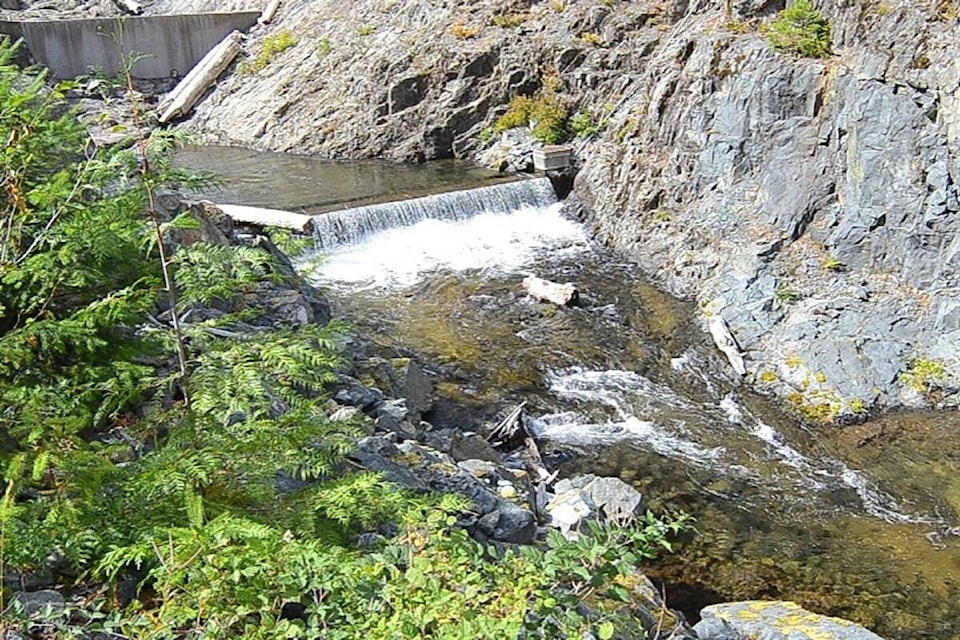Water levels in the Regional District of Nanaimo’s watershed are in good shape for this stage of the summer, according to a report.
A groundwater analysis for 18 area aquifers, compiled with data gathered in May, was presented to the RDN’s board at meeting in late June. Erica Forssman, RDN drinking water and watershed protection program coordinator, told the News Bulletin the report is a snapshot, but precipitation in April has led to numbers well above the norm.
“We’re already into July, August, and then September is when you start to see that recharge,” said Forssman. “Often what you see is by September that’s the time of year that if water levels are low, that’s when you’re going to be sometimes waiting for those fall rains to start picking up and recharging those water sources. But with the wet spring – and even into summer – that we’ve had this year, we’re doing pretty well.”
Despite the positive outlook however, Forssman did say Nanoose and Gabriola Island are areas the RDN “want to keep a closer eye on just because overall we’re seeing that longer-term decline in the aquifers there.”
All 18 aquifers “saw average or an increase in relative groundwater levels” when compared to previous years, noted the report. Eight aquifers saw “above average levels with a trend of stable to increasing levels” during the past three years, the report stated, with six surficial or comprised of sand and gravel: Little Qualicum, Parksville, Millstone valley, two in Nanoose Bay and one in Cassidy. Two (French Creek and upper Lantzville) are made up of bedrock.
A surficial aquifer in Qualicum Beach reported an average level this season, but previously saw declining trends.
Four aquifers, which have historically seen declining numbers, reported average to above-average levels, the report noted. These include surficial aquifers at Lantzville and Cedar and Benson Meadows (near Nanaimo) and Gabriola, which are both bedrock.
Five bedrock aquifers were said to have “variable historic trends, stemming from the fact that different wells in the same aquifer had observed different trends based on the heterogenic nature of aquifer properties such as water-bearing fractures and recharge, or variable local effects from pumping,” the report noted.
A bedrock aquifer in Nanoose saw a large decline, with a below average trend for 2022, according to the report. One in Nanoose peninsula saw moderate decline, with an average trend for 2022. An aquifer in South Wellington saw moderate decline, with an above average trend for this year. Cedar-Yellowpoint saw moderate decline, with average to above trends for this year. One for Errington/Coombs saw large decline, with variable trends in 2022, the report said.
“We see more variation in the bedrock aquifers because you’re essentially pulling water out of cracks in a rock,” said Forssman. “So you may have a well that that hits a crack in the rock that has really, really good water in there and then you could have another well that just keeps coming up dry. Whereas the surficial aquifers … the water is a little bit more evenly distributed in those ones.”
At the meeting, rural area directors expressed concern about development and its effect on water supply.
“I would say, of course, it is about subdivisions, it’s about use, it’s about how many straws are in the aquifer, that is what it’s about,” Leanne Salter, RDN Coombs-Hillier area director. “More people, more [of them] drinking water, less water. That’s the math … we know where we’re at. The longer we densify, the sooner we will not have the water.”
As part of the watershed protection program, groundwater reporting has occurred yearly since 2020, with Waterline Resources Inc. providing technical reports. RDN staff collected information this year and will continue to do so moving forward, said Forssman.
An observation site at Fairwinds in Nanoose saw 273 per cent of average rainfall in April, the report noted.
The RDN provides water to nine communities and three parks.
READ ALSO: City water levels look great as warmer weather arrives
READ ALSO: RDN seeks input for rainwater management plan
reporter@nanaimobulletin.com
Like us on Facebook and follow Karl on Twitter and Instagram
